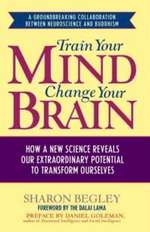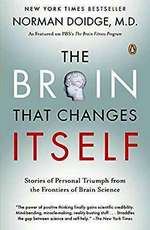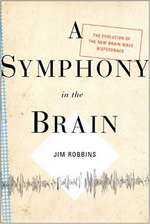Neurofeedback Is Already Used to Control Perception of Pain
(Sylvia Engdahl's background information for her novel Stewards of the Flame)
BACKGROUND ON CONTROVERSIAL
TOPICS DEALT WITH IN
STEWARDS OF THE FLAME
Truer than you may realize
Advanced neurofeedback
Worse than you may know
I was astonished when I learned that brain-scan neurofeedback is already being used to help people control pain. I wrote the first (largely unchanged) draft of Part Two of the novel back in 1989 and put the story away because it then had no plot and I didn't know how it would end. I returned to it in 2005 and finished it in the fall. Just two months later, in December 2005, a report that researchers were teaching people to control perception of pain through real-time brain scanning was published in the Proceedings of the National Academy of Sciences and widely covered by the media. My basic premise had been proven valid.
The concept of feeling pain without minding it is not new. I had heard of it long before and had used it in The Far Side of Evil, where it was significant to the plot; the reason I elaborated on it in the new book was that one of my aims for the story was to explore how the mental capabilities of the very advanced people in my earlier novels might originally develop. But that this could be accomplished through visual feedback from brain scanning was simply something I made up. I didn't expect it to happen in the near future. And of course, it has not yet happened to the extent that it does in my story. The real-life research is done only with relatively mild pain, which is merely lessened by the training; a state of not minding it at all is not the goal. (I suspect that as stated in the book it would require the shock of severe pain, and probably telepathic aid, to accomplish this.) Moreover, the key factor in the training as I envisioned it -- the matching of neurofeedback patterns with an instructor's -- hasn't even been thought of; that came entirely from my imagination. However, the fundamental idea that volitional control over the brain can be gained via feedback from scanning has been demonstrated.

Functional MRI (fMRI), the form of brain scanning used by the researchers, is an exciting new technology that permits the action of the brain to be actually seen in real time. However, MRI scanners are not practical tools for teaching people to deal with pain, or other emotions, on a large scale. An MRI machine (pictured at right) is very large, very noisy, and requires the subject to remain absolutely still for a long period of time. And it cannot be used, or even approached, by anyone who has any sort of metal implant such as a pacemaker -- or according to some accounts, even a microchip -- as the magnetic field could cause the implant to move and injure the person's body. So it's a long way from the sort of neurofeedback used by my characters. But after all, the story takes place far in the future; considering how fast miniaturization of technology has progressed during just the past few decades, it's reasonable to suppose that brain scanning could be accomplished with mere helmets in an era when interstellar travel is routine.
At present, brain-wave neurofeedback, still often called EEG biofeedback, is widely used to help people learn to deal with chronic pain, such as that of migraine headaches. This type of neurofeedback merely tracks electricai output from the brain and is done with standard EEG equipment, not fMRI, which is currently used only for research. It works, as I described in the story, by using colorful computer graphics to display what is going on in a person's brain -- now often in the form of a game in which mental state controls the moves. EEG biofeedback is also commonly used with children who have ADHD or autism and with adults for anxiety, depression, insomnia, post-traumatic stress disorder, etc. and even for conditions such as epilepsy or brain damage from a stroke. In addition it is used to enhance concentration, and thus performance, by people in many fields, from athletes and business executives to NASA pilots.

An argument used against neurofeedback's effectiveness is that there's no proof that brain waves cause the mental states assocated with them, which is very true -- but I think these critics, and even some advocates, are looking at it backwards (see my page about the mind's influence on health.) In my view the mental states cause the brain wave patterns; those patterns simply show what state the mind is in -- the whole point of neurofeedback is that it guides the patient in altering mental states through volition (that is, passive volition, not concious effort, which is counterproductive). The failure to recognize this is an example of the all-too-common belief that there is no such thing as volition and that everything including human feelings has a physical cause.
There are countless websites and YouTube videos devoted to neurofeedback, but almost all of them are ads for clinics that offer it, which tend to exaggerate the benefits. Skeptics point out that that there is no statistical evidence that neurofeedback works, but personally I believe the skill of the instructor is a major factor and that therefore, statistics can never be valid. The field is unregulated and not all practitioners are qualified, but even those well-trained may not all have a gift for helping a person to enter the right state of mind. In fact, although neurofeedback is not harmful in itself, harm can be done if an incompetent practitioner inadvertently trains a person to aim for the wrong type of brain waves.
Moreover, those interested In investigating neurofeedback should be warned that there is a form of therapy called LENS (Low Energy Neurofeedback System) that is something else entirely. Instead of showing the patient the result of his or her own volition, it alters the electrical signals and feeds them back into the brain. (Obviously its proponents believe state of mind is caused by brain waves rather than vice versa.) Though said to be safe and non-invasive, it is not; in a few cases serious problems have resulted from it. Certainly sending even low-energy electricity into the brain is invasive. In any case, it does not help people learn to change mental states through passive volition, and should not be confused with true neurofeedback, which does..
Neuroplasticity
Until very recently, neuroscientists believed that the adult brain, aside from the areas associated with memory formation, could not change -- that chemical and electrical activity in the brain produces mental experiences, and never the other way around. In the 1990s this view began to be modified when it was discovered that damaged brains, such as those of stroke victims, can and do undergo changes during the process of recovery. Now neuroplasticity -- the ability of the brain to "rewire" itself -- has become one of the hottest areas of neuroscience. It received considerable attention after the 2007 publication of Sharon Begley's book Train Your Mind, Change Your Brain, which reports on experiments conducted with the cooperation of the Dalai Lama that proved the brains of Buddhist monks actually change after years of experience in meditation. Since then a great many self-help books about solving personal problems by "changing your brain" have appeared; the use of the word neuroplasticity has become a fad and it's unlikely that the methods suggested by such books really work. But that does not lessen the scientific importance of the discovery.The implications of research in neuroplasticity are enormous, and are just beginning to be recognized. If brain damage can be partially overcome, and if meditators can become more capable of altruism and compassion through alteration of their own brains, then many other things can also be accomplished by mind training. Very probably neurofeedback -- which is not specifically involved in neuroplasticity research -- also has permanent effects on the brain; it seems obvious that it must, considering that its effects are lasting. In any case, scientists' recognition of the power of mind training to alter the brain provides strong support for the futuristic form described in Stewards of the Flame, through which the characters learned to control not only pain perception but many other unconscious processes.
Some videos and links about neurofeedback and neuroplasticity.
Control Over Brain Activation and Pain Learned by Using Real-time Functional MRI by R. Christopher deCharms, Fumiko Maeda, et al. Proceedings of the National Academy of Sciences, December 20, 2005. The original paper reporting the research.
Feedback: Relief From Chronic Pain May Be a Thought Away by Eric Nagourney. New York Times, December 20, 2005. "People who have chronic pain may be able to reduce their suffering by using brain-scanning equipment that lets them see their brain activity and try to modify it."
Seeing Your Pain by Emily Singer. Technology Review, July 1, 2006. "The researchers are also doing extensive psychological screening to see if people who easily learn to control their brain activity have identifying characteristics. One of the biggest factors will probably be motivation." This is a detailed personal account.
Mind Over Matter, With a Machine's Help by Jason Pontin. New York Times, August 26, 2007. "If Dr. deCharms and Omneuron are successful, and can teach us to train our brains to manage neurological and psychological conditions, they will have given us something that has challenged philosophers, psychologists and yogis alike: gaining some reliable control over our own thoughts."
The Neuroscience of Pain by Nicola Twilley. The New Yorker, June 25, 2018. "Pain is neurologically complex, involving responses generated throughout the brain." Positive Feedback. American Psychological Association, Monitor on Psychology, March 2016. "Real-time fMRI offers one big advantage over EEG. . . . While EEG is mostly limited to detecting activity on the brain's surface, fMRI can provide detailed information about what's going on deep within the brain."
Brain Training: The Future of Psychiatric Treatment? by Tedi Asher. Harvard University Science in the News, February 2, 2017. "Studies have shown that neurofeedback training as a therapy for ADHD may be even more effective than the standard medication."
Therapists Are Using Neurofeedback to Treat ADHD, PTSD and Other Conditions by Arlene Karidis. Washington Post, January 19, 2015. "An Alexandria psychologist, compares neurofeedback to riding a bike: It’s non-conscious learning, based on the feedback, that, with repetition, can be long-lasting."
Can Neurofeedback Help Kids with ADHD Press the Restart Button? by Penny WIlliams. Healthline, February 3, 2015. "Neurofeedback is a promising treatment for ADHD, one that could have lasting effects, unlike ADHD medication that only eases symptoms when it is taken daily."
Neurofeedback Therapy for The Management of Pain by Sara Adaes. Brain Blogger, May 27, 2016. "There is evidence indicating that cognitive control of pain can have a direct effect on opiod activity, stimulating the production of endorphins."
Neuromodulation of Cancer Pain by Sarah Prinsloo, Stephanie Gabel, et al. Integrated Cancer Therapies, February 25, 2013. "Neurofeedback is a potentially effective and economical tool with which to manage cancer pain through modulating neural pathways."
What Is Neurofeedback? by Diane Roberts Stoler. Psychology Today, October 4, 2014. Views brain waves as the cause rather than the result of mental states, but otherwise informative.
International Society for Neurofeedback and Research, a professional association with information for practitioners and patients.
What Is Brain Plasticity and Why Is It so Important? by Duncan Banks. The Conversation, April 4, 2016. "Neuroplasticity–or brain plasticity–is the ability of the brain to modify its connections or re-wire itself."
What Is Brain Plasticity? How Experience Changes the Brain by Kendra Cherry. Verywell Mind, March 13, 2019. " While people used to believe that the brain became fixed after a certain age, newer research has revealed that the brain never stops changing in response to learning."
Rewiring the Brain (book review) by Matthew Blakeslee. Discover, March 29, 2007. "By recognizing neuroplasticity as a real and powerful force, we can tilt our theories of mind back into a realm where choice and free will are meaningful concepts, and where radical improvement to the human condition is possible using the right, scientifically proven techniques."
The Brain: Malleable, Capable, Vulnerable (book review) by Abigail Zuger. New York Times, May 29, 2007. "The age-old distinction between the brain and the mind is crumbling fast as the power of positive thinking finally gains scientific credibility."
New Clues to Just How Much the Adult Brain Can Change by Gary Stix. Scientific American, July 14, 2014. "The value of games intended to enhance what is known as neuroplasticity are still a topic of heated debate because no one knows for sure whether or not they improve intelligence, memory, reaction times or any other facet of cognition."
Some books about neurofeedback and neuroplasticity.
 |
 |
 |
 |
Train Your Mind, Change Your Brain: How a New Science Reveals Our Extraordinary Potential to Transform Ourselves by Sharon Begley. Ballantine Books, 2007.
Neuroplasticity by Moheb Costandi. MIT Press, 2016.
Getting Started with Neurofeedback by John R. Demos. Norton, 2004.
The Brain That Changes Itself: Stories of Personal Triumph from the Frontiers of Brain Science by Norman Doidge. Viking, 2007.
The Brain's Way of Healing: Remarkable Discoveries and Recoveries from the Frontiers of Neuroplasticity by Norman Doidge. Penguin, 2016.
Neurofeedback in the Treatment of Developmental Trauma: Calming the Fear-Driven Brain by Sebern F. Fisher. Norton, 2014.
Beyond Biofeedback by Elmer and Alyce Greene. Delacorte, 1977.
A Consumer's Guide to Understanding Qeeg Brain Mapping and Neurofeedback Training by Robert E. Longo.
iUniverse, 2018.
A Symphony in the Brain: The Evolution of the New Brain Wave Biofeedback, byJim Robbins. Grove Press, 2000.
The Mind and the Brain: Neuroplasticity and the Power of Mental Force, Jeffrey M. Schwartz and Sharon Begley. Harper Perennial, 2003.
Biofeedback for the Brain: How Neurotherapy Effectively Treats Depression, ADHD, Autism, and More by
Paul G. Swingle. Rutgers University Press, 2010.
Not Minding Pain
Occasionally, people are born without the ability to feel pain. This is a serious disability; in fact such children sometimes die, as they are not able to avoid injuring themselves or to recover from minor injuries by protecting the affected area of the body. Daily life is a constant hazard for them.The ability to not mind pain is something different. The body reacts normally to pain, but either the pain is not felt consciously -- as is sometimes the case immediately following injury, especially in the case of soldiers in battle -- or it is felt without emotional reaction. This can happen in extreme circumstances; it is known as spontaneous analgesia. In his book Sacred Pain Ariel Glucklich writes, "Pain researchers and many patients know that it is possible to feel pain, to know that it is there, and not really care. Athletes sometimes give strong evidence for this phenomenon." It also happens in some forms of mental illness, hysteria, or religious ecstasy. And as is well known, a state of not feeling pain can be brought about by hypnosis. All of these examples prove that perception of pain depends not on the body, but on the mind.
However, to reach this state deliberately, through volition, is another matter. It is not the same as endurance, and yet the natural reaction of a courageous person is to endure -- which ultimately, if the pain is severe, becomes a self-defeating strategy. Some yogis, fakirs, and shamans do learn to attain it, as have a few others, such as Australian psychiatrist Ainsley Meares. I have from time to time seen references to it, but unfortunately did not record the sources, which I now cannot locate. It is unquestionably a human capability; therefore I believe that in the future, systematic development of it will become possible. My treatment of it in the novel is based on my own speculations about how this might come about, and how it would relate to the development of other capabilities, which I'm now convinced involve the same principle.
Recently I gained access to a paper by an anthropologist about his observation of fire handling by members of churches in the rural south where it was, and presumably still is, used as a demonstration of religious faith. Believers when convinced that the Holy Spirit protects them do actually put their hands in fire, though less calmly than the characters in my novels; and they don't feel pain, nor are they burned. I wasn't aware that this was ever really done; I thought that my portrayal of such extreme mind powers was metaphorical. Evidently not! For more information about the paper, see the bottom of my page on firewalking.
Last updated in June 2019
Text copyright 2019 by Sylvia Engdahl
This series of pages about background for Stewards of the Flame is not meant to be a comprehensive or balanced overview of the topics covered; it merely offers support for the ideas expressed in the novel.
BACKGROUND ON CONTROVERSIAL
TOPICS DEALT WITH IN
STEWARDS OF THE FLAME
Truer than you may realize
Advancded neurofeedback
Worse than you may know